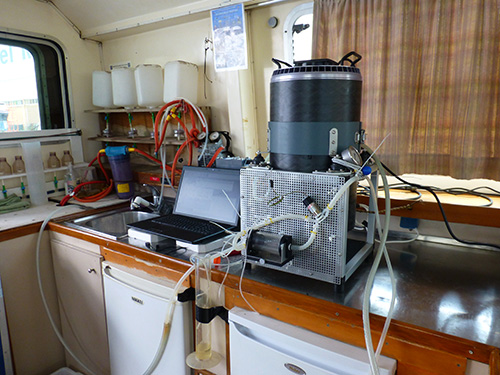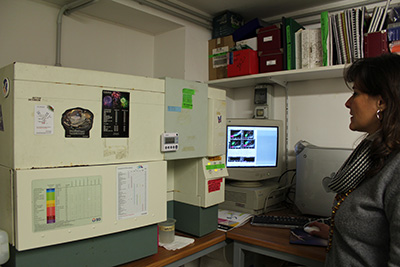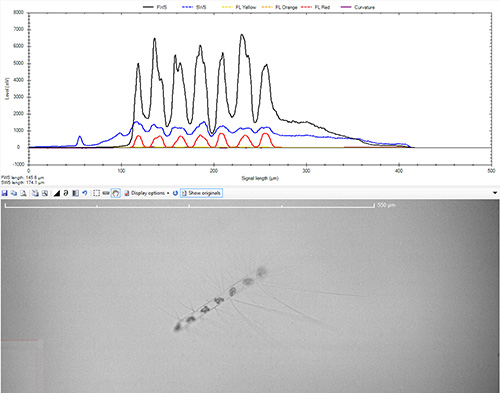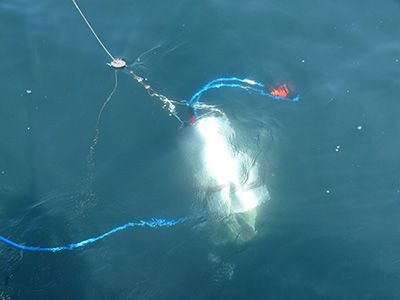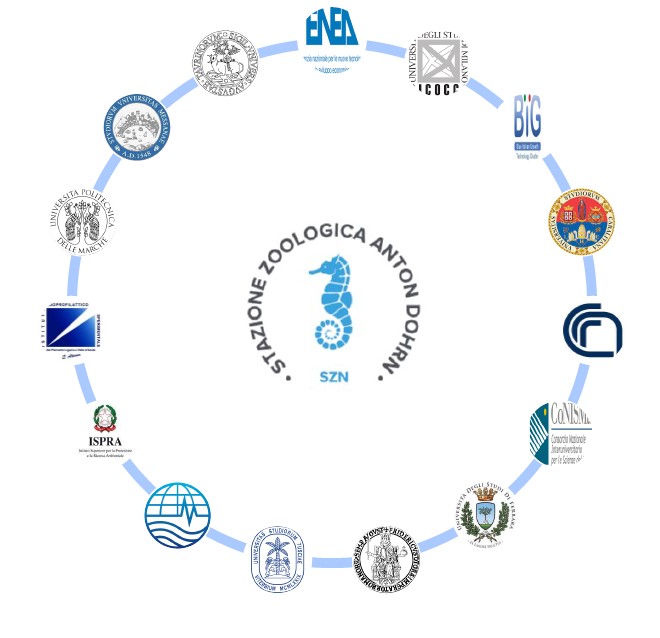
The Italian Node of the European Marine Biological Resource Centre (EMBRC-IT) was constituted on 05/10/2021 as a JRU (Joint Research Unit), including a total of 16 partners (SZN, CONISMA, CNR, OGS, CTN-BIG, IZSPLV, ENEA, ISPRA, UNITUS, UNICA, UNIFE, UNIME UNIMIB UNINA UNITO, UNIVPM) with SZN as its coordinator and representative institute in EMBRC-ERIC.
The Italian JRU was established according to the principles of complementarity and synergy of the partners regarding the development of new collaborative research projects and research services and in order to strengthen scientific research and foster human and infrastructure resources exchange in the field of blue growth.
The JRU agreement has set itself the following objectives:
Strategic Agenda
• Valorisation of the resources and skills of each of the Parties through their coordinated organization and best practices sharing;
• Coordination of national activities within EMBRC–ERIC and provide support to the MUR and other Ministries in organizing the Italian membership in EMBRC–ERIC and in defining strategic research agendas and roadmaps related to sustainable blue growth;
• Strengthening of Italian scientific research in the field of marine biology and promote training, scientific dissemination and communication in this area;
• Promotion of technology transfer and new relationships with national companies;
• Design and organization of pilot actions and projects, demonstrating the peculiarity and value of the Italian contribution to EMBRC–ERIC;
• Conduction of joint activities aimed at consolidating, strengthening and expanding the EMBRC-ERIC Research Infrastructure and its impact in terms of science and innovation, with particular attention to the spill overs at the national level, also by participating jointly or individually in funding programs of the Research.
Public-public and public-private collaborations
• Coordination of an up-to-date National Index of scientific services for the «blue» community
• National services catalogue opened to EU Projects and Transnational Accesses
• Single access point: marketing at national and EU level
• Support to efficient and coordinated technology transfer
• Shared management of orders via the Node capacity
• Improved opportunity for scientific interactions, co-authorship and for interdisciplinary collaborations
• Favourable access conditions for associate partner
Improved fundraising capacity
• HE: Participation in EU projects as individual members of EMBRC-IT that can involve the other members of the JRU and EMBRC-IT itself as Affiliated Entity
• PNRR (NextGenerationEU): Strengthening and improvement of operative units (OU) of EMBRC-IT partners
• H2020: Access to EU-IR grants
• PON 2007-2013: Action on «Potenziamento strutturale»
• POR 2014-20: Action on «access to H2020 EU projects»
EMBRC-IT Partners
• Stazione Zoologica di Napoli Anton Dohrn (SZN) – Italian Node Coordinator
• Cluster Tecnologico Nazionale “Blue Italian Growth”(CTN-BIG)
• Consorzio Interuniversitario per le Scienze del Mare (CoNISMa)
• Istituto Nazionale di Oceanografia e Geofisica Sperimentale (OGS)
• Istituto Zooprofilattico Sperimentale di Piemonte, Liguria e Valle d’Aosta (IZSPLV)
• Università di Cagliari (UNICA)
• Università di Ferrara (UNIFE)
• Università di Messina (UNIME)
• Università di Milano-Bicocca (UNIMIB)
• Università di Napoli Federico II (UNINA)
• Università di Torino (UNITO)
• Università della Tuscia (UNITUS)
• Università Politecnica delle Marche (UNIVPM)
• Istituto Superiore per la Protezione e la Ricerca Ambientale (ISPRA)
• Consiglio Nazionale delle Ricerche (CNR)
• Agenzia nazionale per le nuove tecnologie, l’energia e lo sviluppo economico sostenibile (ENEA)
Summary
EMBRC-IT will offer opportunities for the Italian marine research and technological development community at large because:
• The JRU supports and reinforces the cohesion of the Italian Marine Research Community,
• It fosters a higher visibility of this community at the National (MIUR) and International (EU) level,
• It links marine biological resources to innovation, supporting cooperation with universities, research organizations and industries
• It creates critical mass, capable to interact with, and advise, policy makers
The result of its common effort will be more than the sum of the capacity of each.
Contact information
Node Director: Donatella de Pascale
Liaison Officer: Pasquale De Luca
JRU Manager: Giorgio Maria Vingiani
Responsible: Maria Cristina Buia
Activities
The activities of this laboratory are characterized by the application of various and integrated approaches, classical and innovative, which are conducted in mesocosm/laboratory and in the field, to study the adaptive responses of benthic organisms (invertebrates and macrophytes), and their trophic interactions in relation with environmental factors and gradients, climate change and anthropogenic disturbances. The approaches used include the physiology of individual species, the structure of populations and the dynamics of benthic communities and coastal ecosystems, to identify early-warning signals/descriptors at different level of biological complexity, and finalized to a correct management and conservation of the coastal systems and their biodiversity.
Systems for laboratory experiments
- System for automatic culturing of model organisms.
- Thermostatic chambers for rearing and experiments of benthic organisms in axenic conditions.
- Tanks for maintenance and experimentation of benthic organisms in sea-water open systems.
Analysis
- Qualitative and quantitative analyses of benthic samples deriving mainly from hard and soft bottom vegetated habitats, and soft sediments within the continental shelf.
- Biometric and biomass analyses.
- Biological assays and test for bioactive substances.
- Sample preparation for elemental analyses, and for observation at the scanning and transmission electron microscopy.
- Measurements of environmental variables (Temp., pH, irradiance, dissolved oxygen).
- Measurements of photosynthetic efficiency in macrophytes.
Instrumentation
- Stereomicroscopes, optical microscopes, inverted optical microscope.
- Freezer at -20 °C and refrigerators +4 °C.
- Laminar flow flume and chemical flume.
- Thermostatic cells and chambers.
- Autoclave, ovens, muffle.
- Filtration system.
- Spectophotometer.
- Analytical and technical balance, microbalance.
- Deionizer.
- Liofilizer (deep-dryer).
- Laboratory oxymeter and pH-meter, portable pH-meter.
For scientific underwater use and diving:
- Cameras and video-cameras with underwater dedicated casts.
- Diving-PAM, pH-meters, quantameter, multi-parametric probes.
- Grabs, dredges, corers for sediment and benthos, air-lift sampler, hand-towed net and plankton nets.
Coordinator: Christophe Brunet
Activity
The laboratory of Biogeochemistry and Physiology of Plankton is a multidisciplinary laboratory that uses and develops different approaches dedicated to the study of biogeochemistry and physiology of marine phytoplankton. The laboratory covers research activities related to biological oceanography, biogeochemistry and ecophysiology of marine phytoplankton. Mostly, the laboratory BioFilP implements activities and techniques for the study of the responses of marine microalgae to environmental forcing, with the aim to understand the pelagic ecosystem functioning and the potential use of microalgae in "Blue Growth".
Experimental systems
- Room and cultivation system for microalgae, with development of different types of illumination systems suitable for microalgal growth.
- Pelagic mesocosms for in situ experiments.
Analysis
- Photosynthetic rate and regulation of photosynthesis in microalgae.
- Pigments of photosynthetic organisms.
- Bio-optics of water masses and microalgal cultures.
- Antioxidant activities in microalgae.
- Concentrations of macronutrients in the water masses and in microalgal cultures.
- Spectral light in the water masses.
Equipment
- HPLC analysis for pigments.
- PAMs: Dual-pam and PSI.
- Autoanalyzer for nutrient concentration analysis.
- Spectrophotometer.
- Spectroradiometer in situ probe.
- Bio-optical in situ probe (AC-9).
- Laminar flow hood.
- Room and cultivation system for microalgae.

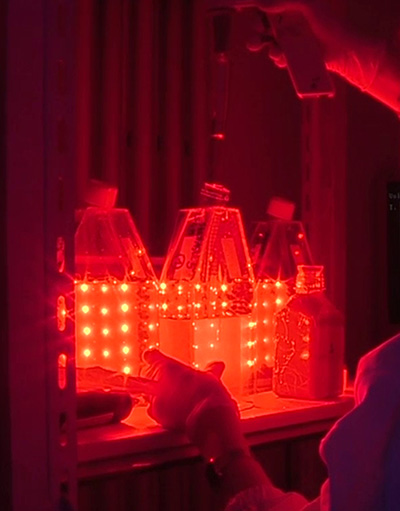
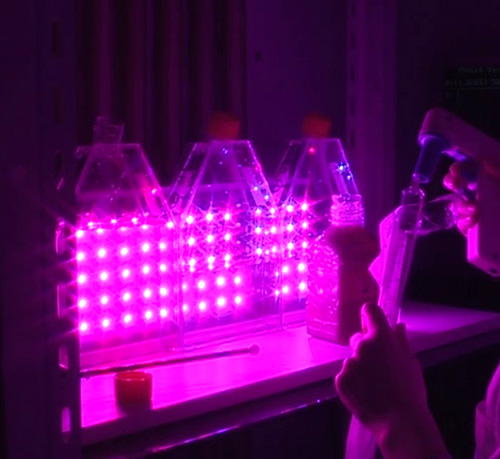

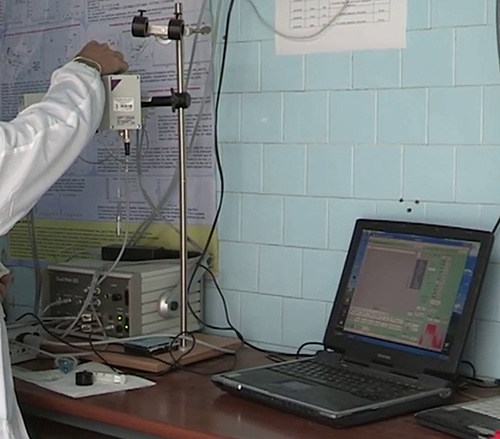
Responsible: Raffaella Casotti
Activities
The laboratory of Microbial Ecology carries on research on marine microorganisms (mainly diatoms and autotrophic/heterotrophic picoplankton) studying their diversity, activity and metabolic functions as well as their interactions with the environment, both physical-chemical and biological. The activities are held mainly by direct methods, that is, independent from cultivation, but monospecific cultures are also used to test specific hypotheses or further characterize microorganisms. The fields of activity cover the biological oceanography, ecophysiology and marine ecology in general.
The laboratory also implements the technical and instrumental approaches for the study of microorganisms, mainly as regards the use of flow cytometry for the monitoring of marine plankton and for the development of early warning systems for biological environmental risk.
Experimental systems
- Thermostated cabinets for growing microalgae and bacteria under controlled light and temperature conditions.
- Tanks for experiments on board ships or outdoors for incubations and manipulations of natural plankton communities.
Analysis
- Counts and measurements of optical parameters (scatter and fluorescence) on cells and unicellular organisms by flow cytometry and epifluorescence microscopy.
- Estimates of growth rates and grazing of picoplankton.
- In situ hybridization with oligonucleotide probes for the characterization of bacterial communities.
- Estimates of DNA content of algae and cell lines by flow cytometry (including dynamics of the cell cycle).
- DNA and RNA extraction for metagenomics and metatranscriptomics.
- Analysis of cellular concentrations of picophytoplankton with scanning flow cytometers at high frequency in both laboratory and on board boats.
- Analysis of concentrations and cellular properties of marine bacteria with prototype automatic coloring module.
Instrumentation
- Conventional flow cytometry.
- Scanning flow cytometer with automated sampling module.
- Laminar flow hood.
- Thermostated cabinets for algal and bacterial cultures.
- Epifluorescence microscope with camera.
- Basic instrumentation for laboratory (centrifuges, thermostated baths, pHmeter, filtration rigs, sonicators, refrigerators and freezers).
